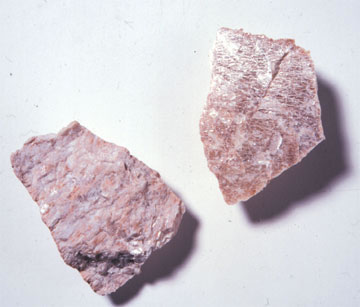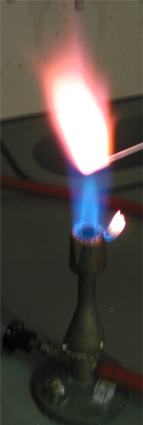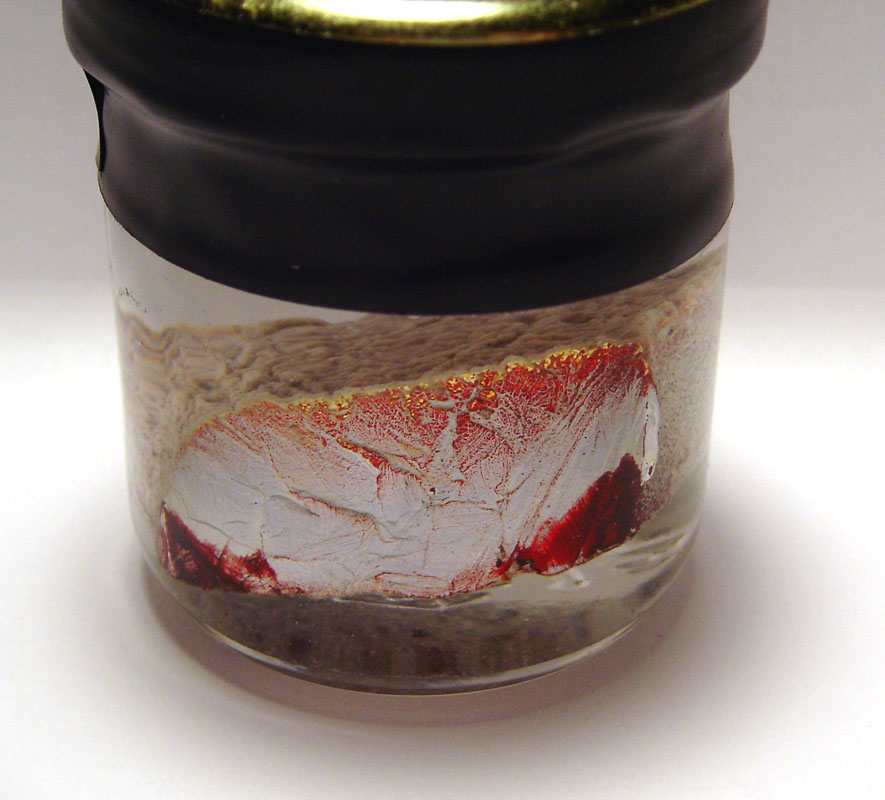Potassium
|
WikiDoc Resources for Potassium |
|
Articles |
|---|
|
Most recent articles on Potassium |
|
Media |
|
Evidence Based Medicine |
|
Clinical Trials |
|
Ongoing Trials on Potassium at Clinical Trials.gov Clinical Trials on Potassium at Google
|
|
Guidelines / Policies / Govt |
|
US National Guidelines Clearinghouse on Potassium
|
|
Books |
|
News |
|
Commentary |
|
Definitions |
|
Patient Resources / Community |
|
Patient resources on Potassium Discussion groups on Potassium Directions to Hospitals Treating Potassium Risk calculators and risk factors for Potassium
|
|
Healthcare Provider Resources |
|
Causes & Risk Factors for Potassium |
|
Continuing Medical Education (CME) |
|
International |
|
|
|
Business |
|
Experimental / Informatics |
Editor-In-Chief: C. Michael Gibson, M.S., M.D. [1]
Overview
Potassium is a chemical element. It has the symbol K and atomic number 19. The name "potassium" comes from the word "potash", as potassium was first isolated from potash. Potassium is a soft silvery-white metallic alkali metal that occurs naturally bound to other elements in seawater and many minerals. It oxidizes rapidly in air and is very reactive, especially towards water. In many respects, potassium and sodium are chemically similar, although organisms in general, and animal cells in particular, treat them very differently.
Occurrence

Potassium makes up about 1.5% of the weight of the Earth's crust and is the seventh most abundant element. As it is very electropositive, potassium metal is difficult to obtain from its minerals. It is never found free in nature, as it reacts violently with water.
Potassium can be isolated through electrolysis of its hydroxide in a process that has changed little since Davy. Thermal methods also are employed in potassium production, using potassium chloride.
Properties
Physical properties

Potassium is the second least dense metal; only lithium is less dense. It is a soft, low-melting solid that can easily be cut with a knife. Freshly cut potassium is silvery in appearance, but in air it begins to tarnish toward grey immediately.
Potassium and its compounds emit a violet color in a flame. This fact is the basis of the flame test for the presence of potassium in a sample. Potassium concentration in solution is commonly determined by flame photometry, atomic absorption spectrophotometry, inductively coupled plasma, or ion selective electrodes.
Chemical properties
Potassium must be protected from air for storage to prevent disintegration of the metal from oxide and hydroxide corrosion. Often samples are maintained under a reducing medium such as kerosene.
Like the other alkali metals, potassium reacts violently with water producing hydrogen. The reaction is notably more violent than that of lithium or sodium with water, and is sufficiently exothermic that the evolved hydrogen gas ignites.
- 2K(s) + 2H2O(l) → H2(g) + 2KOH(aq)
Because potassium reacts quickly with even traces of water, and its reaction products are nonvolatile, it is sometimes used alone, or as NaK (an alloy with sodium which is liquid at room temperature) to dry solvents prior to distillation. In this role, it serves as a potent desiccant.
Potassium hydroxide reacts strongly with carbon dioxide to produce potassium carbonate, and is used to remove traces of CO2 from air.
Potassium compounds generally have excellent water solubility, due to the high hydration energy of the K+ ion. The potassium ion is colorless in water.
Methods of separating potassium by precipitation, sometimes used for gravimetric analysis, include the use of sodium tetraphenyl boron, dihydrogen hexachloroplatinate (IV) hexahydrate, and sodium cobaltinitrite.
Potassium in The Body
Biochemical function
Potassium is important in nerve function and in influencing osmotic balance between cells and the interstitiual fluid.[1]
Potassium may be detected by taste because it triggers three of the five types of tastebuds, according to concentration. Dilute solutions of potassium ion taste sweet (allowing moderate concentrations in milk and juices), while higher concentrations become increasingly bitter/alkaline, and finally also salty to the taste. The combined bitterness and saltiness of high potassium content solutions makes high-dose potassium supplementation by liquid drinks a palatability challenge.
Membrane polarization
Potassium is also important in allowing muscle contraction and the sending of all nerve impulses in animals through action potentials. Because of the interaction of the charge on a potassium ion and its surrounding water molecules, K+ ions are larger than Na+ ions, and ion channels and pumps in cell membranes can easily distinguish between the two types of ions, actively pumping or passively allowing one of the two ions to pass, while blocking the other.
A shortage of potassium in body fluids may cause a potentially fatal condition known as hypokalemia, typically resulting from diarrhea, increased diuresis and vomiting. Deficiency symptoms include muscle weakness, paralytic ileus, ECG abnormalities, decreased reflex response and in severe cases respiratory paralysis, alkalosis and cardiac arrhythmia.
Filtration and excretion
Potassium is an essential mineral macronutrient in human nutrition; it is the major cation (positive ion) inside animal cells, and it is thus important in maintaining fluid and electrolyte balance in the body. Sodium makes up most of the cations of blood plasma at about 145 milliequivalents per liter (3345 milligrams) and potassium makes up most of the cell fluid cations at about 150 millequivalents per liter (4800 milligrams). Plasma is filtered through the glomerulus of the kidneys in enormous amounts, about 180 liters per day.[2] Thus 602,000 milligrams of sodium and 33,000 milligrams of potassium are filtered each day. All but the 1000-10,000 milligrams of sodium and the 1000-4000 milligrams of potassium likely to be in the diet must be reabsorbed. Sodium must be reabsorbed in such a way as to keep the blood volume exactly right and the osmotic pressure correct; potassium must be reabsorbed in such a way as to keep serum concentration as close as possible to to 4.8 milliequivalents (about 190 milligrams) per liter.[3] Sodium pumps must always operate to conserve sodium. Potassium must sometimes be conserved also, but since the amount of potassium in the blood plasma is very small and the pool of potassium in the cells is about thirty times as large, the situation is not so critical for potassium. Since potassium is moved passively[4][5] in counter flow to sodium in response to an apparent (but not actual) Donnan equilibrium,[6] the urine can never sink below the concentration of potassium in serum except sometimes by actively excreting water at the end of the processing. Potassium is secreted twice and reabsorbed three times before the urine reaches the collecting tubules.[7] At that point, it usually has about the same potassium concentration as plasma. If potassium were removed from the diet, there would remain a minimum obligatory kidney excretion of about 200 mg per day when the serum declines to 3.0-3.5 milliequivalents per liter in about one week,[8] and can never be cut off completely. Because it cannot be cut off completely, death will result when the whole body potassium declines to the vicinity of one-half full capacity. At the end of the processing, potassium is secreted one more time if the serum levels are too high.
The potassium moves passively through pores in the cell wall. When ions move through pumps there is a gate in the pumps on either side of the cell wall and only one gate can be open at once. As a result 100 ions are forced through per second. Pores have only one gate and there one kind of ion only can stream through at 10 million to 100 million ions per second.[9] The pores require calcium in order to open[10] although it is thought that the calcium works in reverse by blocking at least one of the pores.[11] Carbonyl groups inside the pore on the amino acids mimics the water hydration that takes place in water solution[12] by the nature of the electrostatic charges on four carbonyl groups inside the pore.[13]
Potassium in The Diet
Adequate intake can generally be guaranteed by eating a variety of foods containing potassium and deficiency is rare in healthy individuals eating a balanced diet. Foods with high sources of potassium include in order from highest to lowest avocados, potatoes, bananas, broccoli, orange juice, soybeans and apricots, although it is also common in most fruits, vegetables and meats. Diets high in potassium can reduce the risk of hypertension and a potassium deficiency combined with an adequate thiamine intake has produced heart disease in rats.[14] The 2004 guidelines of the Institute of Medicine specify an DRI of 4,000mg of potassium, though most Americans consume only half that amount per day.[15] Similarly, in the European Union, particularly in Germany and Italy, insufficient potassium intake is somewhat common.[16]
Supplements of potassium in medicine are most widely used in conjunction with loop diuretics and thiazides, classes of diuretics which rid the body of sodium and water, but have the side effect of also causing potassium loss in urine. A variety of medical supplements are available. If potassium supplements are used, such as sodium free baking powder and sodium free table salt, inadequate thiamine can cause beriberi.[17][18] A vitamin B-1 deficiency is possible if food containing sulfite or sulfur dioxide is eaten or an alcoholic drink fermented with sulfur dioxide is consumed during the meal, since sulfite destroys vitamin B-1 in the intestines.[19]
Individuals suffering from kidney diseases may suffer adverse health effects from consuming large quantities of dietary potassium. End stage renal failure patients undergoing therapy by renal dialysis must observe strict dietary limits on potassium intake, since the kidneys control potassium excretion, and buildup of blood concentrations of potassium may trigger fatal cardiac arrhythmia. Acute hyperkalemia can be reduced through eating baking soda,[20] or glucose,[21][22] hyperventilation[23] and perspiration.[24]
Applications
Agriculture and health

- In animal cells, potassium ions are vital to keeping cells alive (see Na-K pump)
- Potassium chloride is used as a substitute for table salt and is also used to stop the heart, e.g. in cardiac surgery and in executions by lethal injection in a solution.
- Potassium sodium tartrate, or Rochelle salt (KNaC4H4O6) is used in baking powder and medicine.
- Potassium pyrophosphate (K4P2O7) is used in soaps and detergents.
Precautions
Solid potassium reacts violently with water, and should therefore be kept under a mineral oil such as kerosene and handled with care. Unlike lithium and sodium, however, potassium cannot be stored under oil indefinitely. If stored longer than 6 months to a year, dangerous shock-sensitive peroxides can form on the metal and under the lid of the container, which can detonate upon opening. It is recommended that potassium, rubidium or caesium not be stored for longer than three months unless stored in an inert (oxygen free) atmosphere, or under vacuum.[25]
The extremely alkaline potassium hydroxide (KOH) residue on the surface of potassium which has been exposed to moisture, is a caustic hazard. As with sodium metal, the "soapy" feel of potassium metal on skin is due to caustic breakdown of the fats in skin into crude soft potassium soap, and represents the beginning of an alkali burn. Potassium should obviously be handled with care, with full skin and eye protection.
Potassium fires are exacerbated by water, and only a few dry chemicals are effective for them. Potassium has also been discovered to react violently with iodine.
References
- ↑ Campbell, Neil (1987). Biology. p. 795. ISBN 0-8053-1840-2.
- ↑ Potts, W.T.W. (1964). Osmotic and ionic regulation in animals. Pergamon Press. Unknown parameter
|coauthors=ignored (help) - ↑ Lans HS, Stein IF, Meyer KA (1952). "The relation of serum potassium to erythrocyte potassium in normal subjects and patients with potassium deficiency". Am. J. Med. Sci. 223 (1): 65–74. PMID 14902792.
- ↑ Bennett CM, Brenner BM, Berliner RW (1968). "Micropuncture study of nephron function in the rhesus monkey". J Clin Invest. 47 (1): 203–216. PMID 16695942.
- ↑ Solomon AK (1962). "Pumps in the living cell". Sci. Am. 207: 100–8. PMID 13914986.
- ↑ Kernan, Roderick P. (1980). Cell potassium (Transport in the life sciences). New York: Wiley. ISBN 0471048062.; p. 40 & 48.
- ↑ Wright FS (1977). "Sites and mechanisms of potassium transport along the renal tubule". Kidney Int. 11 (6): 415–32. PMID 875263.
- ↑ Squires RD, Huth EJ (1959). "Experimental potassium depletion in normal human subjects. I. Relation of ionic intakes to the renal conservation of potassium". J. Clin. Invest. 38 (7): 1134–48. PMID 13664789.
- ↑ Gadsby DC (2004). "Ion transport: spot the difference". Nature. 427 (6977): 795–7. doi:10.1038/427795a. PMID 14985745.; for a diagram of the potassium pores are viewed, see Miller C (2001). "See potassium run". Nature. 414 (6859): 23–4. doi:10.1038/35102126. PMID 11689922.
- ↑ Jiang Y, Lee A, Chen J, Cadene M, Chait BT, MacKinnon R (2002). "Crystal structure and mechanism of a calcium-gated potassium channel". Nature. 417 (6888): 515–22. doi:10.1038/417515a. PMID 12037559.
- ↑ Shi N, Ye S, Alam A, Chen L, Jiang Y (2006). "Atomic structure of a Na+- and K+-conducting channel". Nature. 440 (7083): 570–4. doi:10.1038/nature04508. PMID 16467789.; includes a detailed picture of atoms in the pump.
- ↑ Zhou Y, Morais-Cabral JH, Kaufman A, MacKinnon R (2001). "Chemistry of ion coordination and hydration revealed by a K+ channel-Fab complex at 2.0 A resolution". Nature. 414 (6859): 43–8. doi:10.1038/35102009. PMID 11689936.
- ↑ Noskov SY, Bernèche S, Roux B (2004). "Control of ion selectivity in potassium channels by electrostatic and dynamic properties of carbonyl ligands". Nature. 431 (7010): 830–4. doi:10.1038/nature02943. PMID 15483608.
- ↑ Folis, R.H. (1942). "Myocardial Necrosis in Rats on a Potassium Low Diet Prevented by Thiamine Deficiency". Bull. Johns-Hopkins Hospital. 71: 235.
- ↑ Grim CE, Luft FC, Miller JZ; et al. (1980). "Racial differences in blood pressure in Evans County, Georgia: relationship to sodium and potassium intake and plasma renin activity". J Chronic Dis. 33 (2): 87–94. PMID 6986391.
- ↑ Karger, S. (2004). "Energy and nutrient intake in the European Union" (pdf). Ann Nutr Metab. 48 (2 (suppl)): 1–16.
- ↑ Mineno, T (1969). "Effect of some vitamins and other substances on K metabolism in the myocardia of vitamin deficient rats - Experimental investigation". J. Nagoya Med. Assoc. 92, : 80–95.
- ↑ Gould, SE (ed) (1968). Pathology of the Heart and Blood Vessels. Charles C. Thomas. p. 851. p. 508.
- ↑ Amerine, M.A. (1972). "Recent advances in enology". Critical Reviews in Food Technology," TE Furia (ed.). Chemical Rubber Co., Cleveland. 2: 407–515. Unknown parameter
|coauthors=ignored (help) - ↑ Berliner RW, Kennedy TJ, Orloff J (1951). "Relationship between acidification of the urine and potassium metabolism; effect of carbonic anhydrase inhibition on potassium excretion". Am. J. Med. 11 (3): 274–82. PMID 14877833.
- ↑ Knochel JP (1984). "Diuretic-induced hypokalemia". Am. J. Med. 77 (5A): 18–27. PMID 6496556.
- ↑ Kolb H, Burkart V (1999). "Nicotinamide in type 1 diabetes. Mechanism of action revisited". Diabetes Care. 22 Suppl 2: B16–20. PMID 10097894.
- ↑ Kilburn KH (1966). "Movements of potassium during acute respiratory acidosis and recovery". J Appl Physiol. 21 (2): 679–84. PMID 5934480.
- ↑ Consolazio CF, Matoush LO, Nelson RA, Harding RS, Canham JE (1963). "Excretion of sodium, potassium, magnesium and iron in human sweat and the relation of each to balance and requirements". J. Nutr. 79: 407–15. PMID 14022653.
- ↑ Thomas K. Wray. "DANGER: PEROXIDIZABLE CHEMICALS" (PDF). Environmental Health & Public Safety (North Carolina State University).
See also
External links
af:Kalium ar:بوتاسيوم ast:Potasiu bn:পটাশিয়াম zh-min-nan:K (goân-sò͘) be:Калій bs:Kalijum bg:Калий ca:Potassi cs:Draslík co:Potassiu cy:Potasiwm da:Kalium de:Kalium dv:ޕަޓޭސިއަމް et:Kaalium el:Κάλιο eo:Kalio fa:پتاسیم fur:Potassi ga:Potaisiam gl:Potasio (elemento) ko:칼륨 hy:Կալիում hi:पोटासियम hr:Kalij io:Kalio id:Kalium is:Kalín it:Potassio he:אשלגן sw:Kali ht:Potasyòm ku:Qelye la:Kalium lv:Kālijs lb:Kalium lt:Kalis jbo:sodnrkali hu:Kálium mk:Калиум ml:പൊട്ടാസ്യം mi:Konurehu nl:Kalium no:Kalium nn:Kalium nov:Kalium oc:Potassi uz:Kaliy qu:Kalyu sq:Kaliumi simple:Potassium sk:Draslík sl:Kalij sr:Калијум sh:Kalij fi:Kalium sv:Kalium th:โพแทสเซียม tg:Калий uk:Калій ur:پوٹاشیم wa:Potassiom vls:Kalium zh-yue:鉀